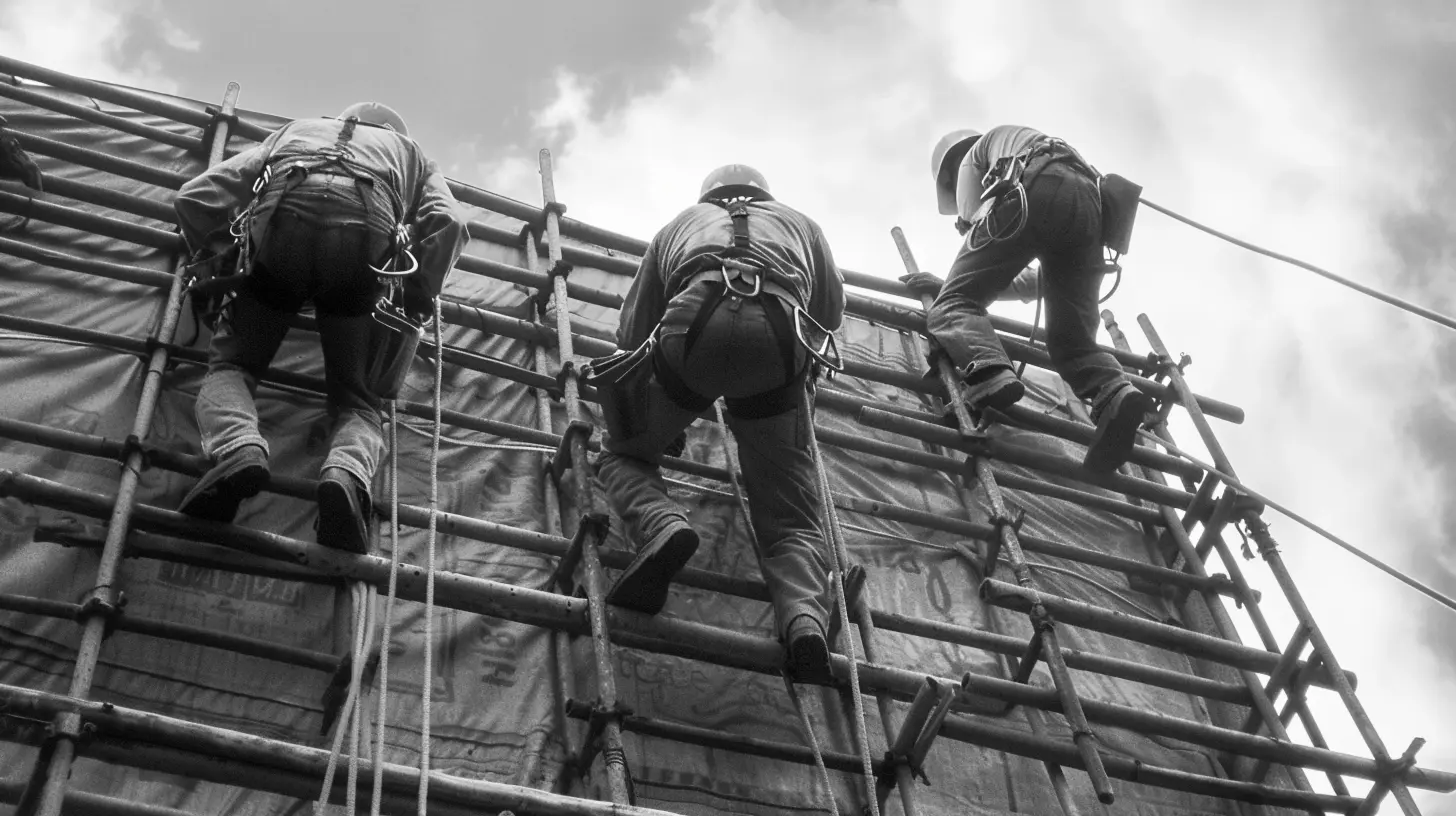Building Resilient Project Teams in Challenging Times
6 May 2025
Let’s face it—project management is tough enough when everything’s smooth sailing. But when the waters get choppy and challenges start piling up, it can feel like trying to steady a sinking ship. So, how do you ensure your team doesn't just survive but thrives in these challenging times? The answer lies in building resilient project teams. Resilience isn’t just a trendy buzzword; it’s the secret sauce for pushing through tough times and hitting your goals, no matter what comes your way.
In this article, we’re diving deep into how you can foster resilience in your project teams, especially when the going gets rough. From strengthening collaboration to improving adaptability, this guide will help you understand what it takes to build a project team that bounces back stronger than ever.
Why Resilience Matters More Than Ever
First things first—why all the fuss about resilience? Isn’t having the right skills and tools enough?Not anymore.
These days, businesses are facing more curveballs than a major league pitcher. Economic instability, workplace shifts (hello, remote work!), tight deadlines, limited budgets—you name it. If your project team isn’t resilient, even the smallest hiccup could derail your progress. Resilience is what helps your team stay calm under pressure, think clearly, and fight their way back when setbacks happen.
Think of resilience like a rubber band—it’s not about never stretching. It’s about the ability to bounce back into shape no matter how far you’re pulled.
Key Traits of Resilient Project Teams
So, what separates resilient teams from those that crumble when things get tough? Let’s break it down.1. Adaptability
Resilient teams roll with the punches. They’re not stuck in rigid ways of doing things. If a plan doesn’t work out, they pivot. They don’t see change as a threat—it’s just another challenge to tackle.2. Strong Communication
Ever hear the phrase, “communication is key”? Well, it’s true. During challenging times, clear and open communication keeps everyone aligned. Miscommunication, on the other hand, can turn a minor challenge into an all-out disaster.3. Problem-Solving Mindset
When problems arise (and let’s be real, they always do), resilient teams stay solutions-focused. They don’t waste time pointing fingers or falling apart. Instead, they jump straight into problem-solving mode.4. Empathy and Support
Resilient teams take care of each other. They recognize that they’re all in it together. Empathy creates a culture where team members feel supported, making it easier to ride out tough situations.5. Confidence and Self-Belief
No, we’re not talking about overconfidence. Resilient teams know their strengths and believe they can overcome challenges. This sense of self-assurance is what keeps them from giving up when things get messy.
Strategies for Building Resilience in Your Project Team
Ready to strengthen your team’s resilience? Here’s how you can do it.1. Foster Open Communication Channels
A resilient team thrives on transparency. Make it easy for team members to share their thoughts, concerns, and ideas. Regular team meetings, one-on-ones, and online collaboration tools (think Slack or Microsoft Teams) can work wonders for keeping everyone on the same page. Encourage questions and feedback—it’s better to overcommunicate than to leave people guessing.Quick Tip:
Use daily stand-up meetings or short check-ins to ensure everyone stays updated and aligned.2. Encourage Flexibility and Innovation
Nothing kills resilience like a rigid work environment. Show your team that it’s okay to try new things, even if they don’t always work out. Create a culture of experimentation where failure isn’t feared but seen as a stepping stone to success.Think of it like learning to ride a bike. It’s the falls that teach you how to balance better. Similarly, let your team stumble occasionally so they become more agile and innovative.
3. Invest in Team Building
Let’s be honest—building relationships within a team isn’t just about those awkward trust falls from team retreats. True team building is about fostering trust and camaraderie over time. Strong bonds lead to better collaboration and mutual support, especially in high-stakes situations.Organize team lunches, friendly competitions, or even virtual game nights if you’re all remote. When people feel connected, they’re far more likely to go the extra mile for each other.
4. Prioritize Mental Well-being
Resilience isn’t just about handling external challenges—it’s also about taking care of what’s inside. Stress and burnout can bring even the strongest teams to their knees. Make mental well-being a priority by encouraging work-life balance, offering mental health resources, and being mindful of workloads.Your team isn’t an army of robots. Allow breaks, celebrate small wins, and cultivate an atmosphere where people feel okay saying, “I need a breather.”
5. Nurture Leadership Skills Within the Team
Resilience doesn’t come solely from the team leader. It needs to be baked into the DNA of every team member. Encourage individuals to take ownership of their tasks. Trust them to make decisions and show autonomy.This empowerment creates micro-leaders within the team who can step up when challenges arise. It’s like having a soccer team where every player can take a penalty shot—not just the star forward.
6. Coach Your Team to Focus on Solutions, Not Problems
When challenges hit, it’s easy for a team to spiral into “doom and gloom” thinking. As a leader, you need to shift their focus back to solutions. Ask questions like, “What can we do next?” or “How can we work around this obstacle?” This creates a sense of control and forward momentum.7. Celebrate Resilience and Progress
Finally, acknowledge the resilience your team shows. Did they successfully navigate a tight deadline? Handle a sudden change in project scope? Celebrate it! When you recognize the team’s efforts, you reinforce the behavior you want them to continue.
Red Flags That Show Your Team Lacks Resilience
Building resilience takes time, but it’s also essential to spot the warning signs of a fragile team. Keep an eye out for these red flags:- Constant miscommunication or misunderstandings.
- Low morale or frequent burnout.
- Resistance to change or innovation.
- Finger-pointing during challenges.
- Apathy towards goals or deliverables.
If you notice these creeping into your team dynamics, it’s time to hit the reset button and prioritize resilience-building.
The Long-Term Benefits of Resilient Teams
Why do all of this work? Because building a resilient project team doesn’t just help you tackle today’s challenges—it prepares you for future ones. Resilient teams are more innovative, engaged, and efficient. They don’t just survive—they thrive.And here’s the kicker: resilience isn’t just a "team skill." It spills over into individual growth. Team members who develop resilience in a professional setting often take those same skills into their personal lives, becoming better problem-solvers and decision-makers overall.
Final Thoughts: The Resilience Advantage
In challenging times, your project team’s resilience can be the difference between sinking and swimming. By fostering adaptability, communication, and mutual support, you’ll create a team that not only weathers the storm but comes out stronger on the other side.Sure, there will be occasional hiccups and mistakes—they’re part of the game. But with resilience in your corner, you’ll be ready to tackle whatever comes your way. So, roll up your sleeves, focus on these strategies, and start building a team that’s as tough as nails and flexible as bamboo.
all images in this post were generated using AI tools
Category:
Project ManagementAuthor:

Baylor McFarlin
Discussion
rate this article
5 comments
Harley McCaffrey
In uncertain times, mediocrity won't cut it. Embrace bold leadership, foster open communication, and prioritize team well-being. Resilient teams adapt, thrive, and drive success—no excuses!
May 17, 2025 at 3:42 AM

Baylor McFarlin
Absolutely! In challenging times, bold leadership and open communication are essential for building resilient teams that can adapt and succeed. Prioritizing team well-being is key to fostering a thriving project environment. Thank you for your insightful comment!
Olivia Reynolds
Like a good cup of coffee, resilient teams brew best under pressure—stirring success!
May 13, 2025 at 2:59 AM

Baylor McFarlin
Thank you! I love the coffee analogy—resilience truly does enhance team dynamics and fosters success in tough situations.
Pia Rhodes
Thank you for sharing these insightful strategies for fostering resilience within project teams. Emphasizing adaptability and open communication is crucial in today's dynamic environment. Your practical tips provide valuable guidance for leaders aiming to navigate and thrive through challenging circumstances. Well done!
May 11, 2025 at 7:03 PM

Baylor McFarlin
Thank you for your kind words! I'm glad you found the strategies helpful for fostering resilience in project teams. Your feedback is greatly appreciated!
Silas Franklin
Empower teams through adaptability and trust.
May 10, 2025 at 7:01 PM

Baylor McFarlin
Absolutely! Empowering teams with adaptability and trust is essential for resilience, enabling them to navigate challenges effectively.
Astraea Roth
In a world where uncertainty looms, the secret to success lies not just in individual talent but in the elusive chemistry of collaborative strength. What hidden dynamics foster resilience in project teams? Unravel the layers of connection and watch as challenges transform into stepping stones toward remarkable achievement.
May 6, 2025 at 4:45 AM

Baylor McFarlin
Thank you for your insightful comment! Indeed, the synergy of diverse perspectives and strong communication fosters resilience, enabling teams to navigate challenges together and turn them into opportunities for growth.




